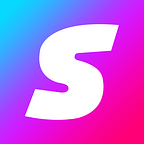5 Tips for Designing an Eye-Catching Mobile App Icon
A Complete Guide to App Store Optimization(ASO) — part1. Icon
Introduction
Store Page where users go to download the game is as important as video creatives. The store page is exposed to both users who have seen ads and organic users. Being the page where users can download the game, it is crucial to represent the game effectively through icons, screenshots, and app descriptions, ensuring that users can easily understand.
Among these, the App Icon is not only the first to be exposed on the store page but also plays a vital role in determining the impression of the game. The purpose of the icon is to make users intuitively understand the game (from the user’s point of view), and to target users who might be interested in the game (from the game company’s point of view). Therefore, we at Supercent would like to introduce five tips we use to make our game app icons stand out to users.
Tip 1. Capture the Key Concepts of the Game
The game app icon is one of the fundamental elements in the store optimization. To allow users to immediately speculate the nature of the game upon seeing the icon, it’s essential to use an icon that effectively conveys the game’s primary theme and mechanics.
In particular, icons that showcase the game’s mechanics rather than just the game’s theme tend to have better conversions. For example, in <Pizza Ready>, an icon that showed a stickman selling pizza performed better than with a pizza alone.
Try using themes or materials that worked well in your Creative Ads for your icons.
Elements and materials that perform well in ad creatives are more likely to perform well in icons too. In the case of <Burger Please!>, applying the drive-thru theme that was successful in video creatives to the icon resulted in a 1.8% improvement in conversion rate.
Tip 2: Use Bright Colors and Contrast
It’s essential to use bright colors to ensure that the icon is visually striking. While a blue background often yields positive results, employing any bright color, even if not blue, can enhance the icon’s conversion rate. Additionally, applying colors that contrast with the background to the icon enhances visibility through visual contrast, making it more intuitive for users.
A crucial point to note here is that it’s more important to use bright colors to provide contrast than just using contrasting colors. In the case of <Outlets Rush>, the original icon used contrasting colors such as black and white, blue and orange. However, through A/B testing, changing the dark background to a bright blue and altering the stickman to contrasting colors like red and yellow resulted in significant conversion rate increases of over 48% and 36%, respectively.
Tip 3: Emphasize Dynamic Movements
The icon is an image, but to better represent your game, it’s a good idea to emphasize the movement of your characters or elements. Emphasizing dynamic movement makes your game look more exciting and users can immediately identify the actions they can expect in the game. Try this by creating an icon that shows the character in motion, or by adding a color accent to the movement effect.
In the case of the action-runner genre game, <Hit & Run: Solo Leveling>, we tested two versions of the icon: one that highlighted the character moving forward quickly, and another version emphasizing the movement effect of a character swinging a sword. The results showed that the second, more dynamic icon converted 5.3% better.
In the case of <Drop the Drop>, which highlights ASMR through the movement of oil, an icon conveying the sensation of water droplets descending stairs achieved a remarkable 9.2% higher conversion rate than an icon with a static feel.
Tip 4: Explore Materials that Users Love
The choice of materials for the icon can significantly impact the download conversion rate. The only way to know which ones will convert better is through testing, so you should experiment with as many different materials as possible to find the best ones from time to time.
In the case of <Dessert Factory Idle>, to determine which theme & material performed better, we conducted tests with icons of the same layout but different elements. Through this test, we discovered that the chocolate chip cookie machine had a higher conversion rate compared to the original pink donut machine.
Tip 5. Test Separately for Each OS
There’s no guarantee that an icon that performs well on AOS will perform equally well on iOS — you may see a higher conversion rate for the A icon on AOS, but a higher conversion rate for the C icon on iOS, and so on. Therefore, it’s advisable to conduct tests separately for each operating system to confirm the performance of the icon tailored to each platform.
In Conclusion…
While the icon is a crucial element in-store page optimization, it’s just a piece of the puzzle. There are many aspects to consider, including screenshots, app descriptions, keywords, and more.
In our next blog, we’ll share tips on creating compelling Screenshots to maximize organic user engagement, and we’ll also delve into the strategy of crafting effective Descriptions using high-search-volume keywords that Supercent has found successful.
So, Stay tuned!
Want to get more tips for developing hyper-casual games?
Click right here and become a partner with Supercent!
[Contact]
- E-mail: help@supercent.io
- Website: supercent.io
